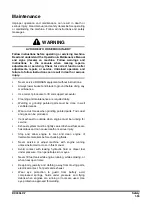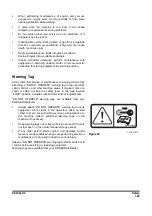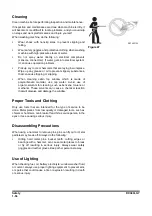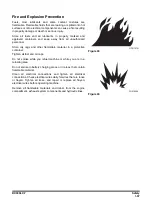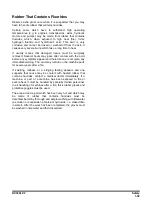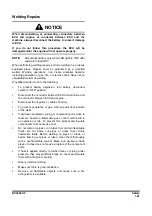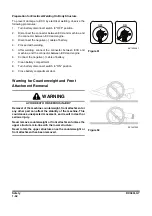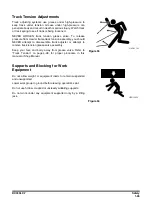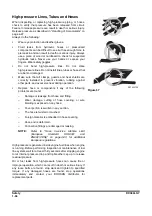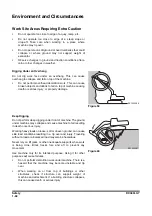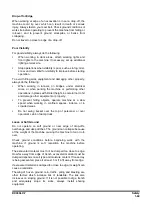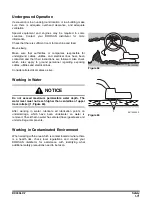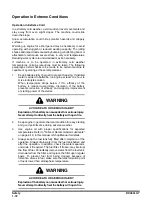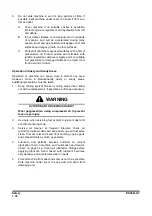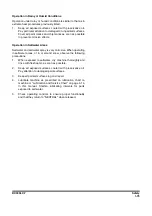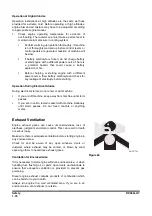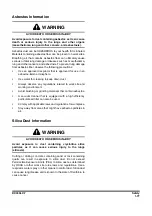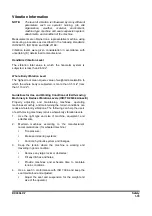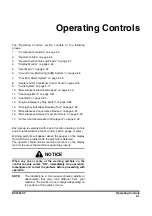
1-67
DX380LC-7
Battery
Battery Hazard Prevention
Battery electrolyte contains diluted sulfuric acid and generates
hydrogen gas. Hydrogen gas is highly explosive, and improper
handling can cause death or serious injury, or fire. Always
observe the following precautions.
•
Do not smoke or bring any flame near battery.
•
When cleaning top surface of battery, wipe it with a clean,
damp cloth. Never use gasoline, thinner, or any other
organic solvent or detergent.
•
Tighten battery caps.
•
If battery electrolyte is frozen, do not charge battery or start
engine with power from another source. This could cause
the battery to explode and start a fire.
•
When charging battery or starting with power from another
source, let battery electrolyte thaw and check that there is
no leakage of battery electrolyte before starting operation.
•
Always remove battery from machine before charging.
•
Before maintaining or working with batteries, turn starter
switch to "O" (OFF) position.
Since there is a potential hazard that sparks could be generated,
always do the following:
•
Do not let tools, rings or other metal objects make any
contact between battery terminals. Do not leave tools or
other metal objects lying near battery.
•
When disconnecting battery terminals, wait for
approximately one minute after turning engine starter
switch key to "O" (OFF) position, and be sure to disconnect
grounding terminal; negative (-) terminal first. Conversely,
when connecting them, begin with positive (+) terminal and
then grounding (-) terminal, Make sure that all terminals
are connected securely.
•
Flammable hydrogen gas is generated when battery is
charged. Remove battery from machine, take it to a well
ventilated place, and remove battery caps, before charging
it.
•
After charging, tighten battery caps securely.
•
After charging, secure battery back in machine.
When repairing or welding electrical system, wait for
approximately one minute after turning engine starter switch key
"OFF". Then disconnect negative (-) terminal of battery to stop
flow of electricity.
EX1400136
Figure 58

